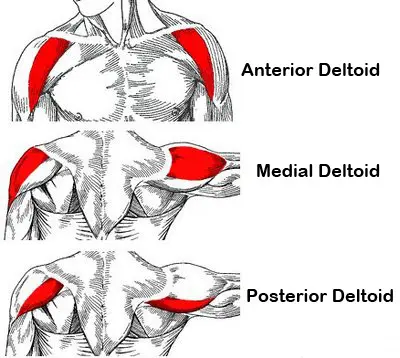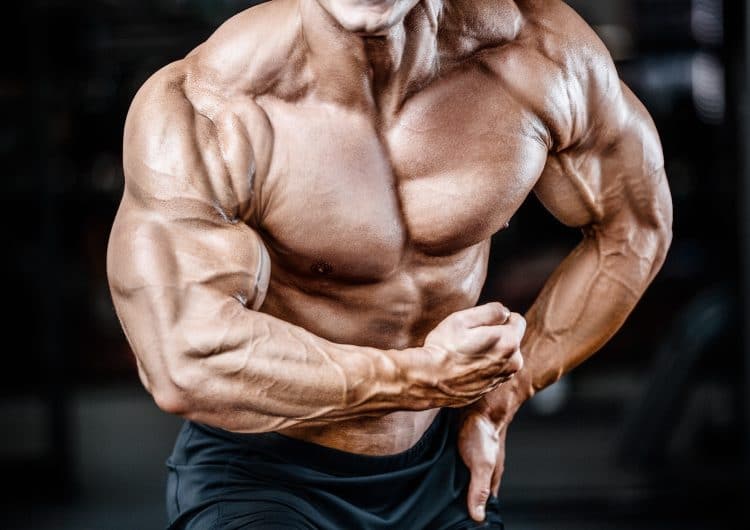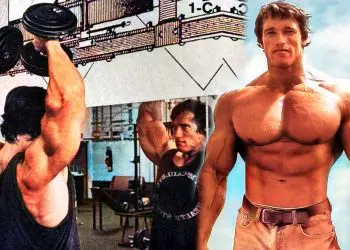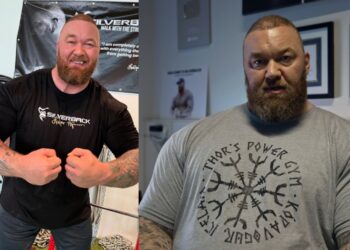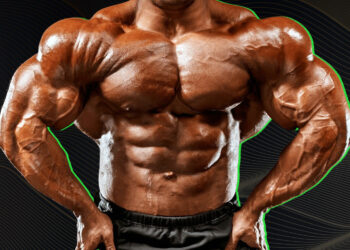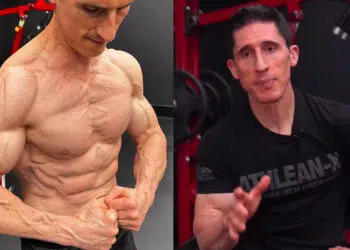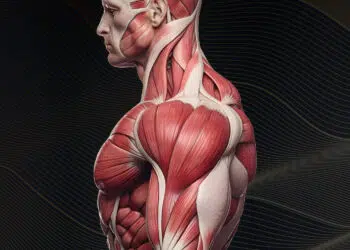If you want bigger shoulders, bodybuilding convention says that you need to include overhead presses in your workouts. Overhead presses allow you to train hard and heavy and turn your slender shoulders into bulging boulders.
Unfortunately, overhead presses are a problem for some lifters, and even shoulder-friendly variations like neutral grip dumbbell presses can lead to joint pain.
Shoulder pain is no laughing matter and can affect all your upper body workouts. As such, it may be time to try training your shoulders without overhead presses.
So, in this article, we’ve got a no-press shoulder workout to try. Don’t worry; you’ll still be able to build cannonball delts even without overhead presses.
Deltoid Anatomy 101
The deltoids are your main shoulder muscles. Working with your lats and pecs, they control all your shoulder joint movements.
There are three groups of fibers, called heads, that make up your deltoids – anterior, medial, and posterior. These heads work together, but it’s also possible to emphasize each one by performing specific exercises.
Level Up Your Fitness: Join our 💪 strong community in Fitness Volt Newsletter. Get daily inspiration, expert-backed workouts, nutrition tips, the latest in strength sports, and the support you need to reach your goals. Subscribe for free!
All three heads need to be developed equally if you want strong, healthy shoulders. However, many lifters have overdeveloped anterior deltoids and underdeveloped posterior deltoids.
So, while you don’t need a degree in functional anatomy to build impressive shoulders, knowing a little more about how each deltoid head works may help you create better workouts for more balanced shoulders.
Anterior deltoids
Located on the front of your shoulders, the anterior deltoids are responsible for flexion, horizontal flexion, and internal shoulder joint rotation. Of all the deltoids, this is the head most likely to be overdeveloped.
Why?
Because it’s involved in every chest exercise you do. Acting as a synergist or helper muscles, the anterior deltoids work whenever you do overhead presses, front raises, bench presses, push-ups, flyes, or dips. It’s a hard-worked muscle! Subsequently, a lot of lifters already have well-developed anterior deltoids.
Medial deltoids
Located on the side of your shoulders, this is the deltoid head that gives your shoulders their width. Big medial deltoids help create that V-taper that looks so good and makes your waist appear narrower. The function of the medial deltoid is the abduction of the shoulder joint. That means it raises your upper arm up and out to your side.
Posterior deltoids
Located on the back of your shoulders, the posterior or rear delts oppose the anterior deltoid. They are responsible for extension, horizontal extension, and external rotation of the shoulder joint.
While the anterior deltoid is usually the most well-developed deltoid head, the posterior deltoid is often the least developed. As such, for many lifters, this head needs extra attention.
Not training the posterior deltoid enough can affect the appearance and function of your shoulders. It’s an essential postural and stability muscle. The shoulder joint can become unbalanced if its development lags too far behind the anterior deltoid.
The No-Press Deltoid Workout
If Arnold presses, strict presses, and other overhead exercises cause or exacerbate shoulder pain, it’s time to change the way you train your delts. After all, those nagging aches and pains aren’t going to go away if you keep on doing the exercises that cause them in the first place.
Show your shoulders some love with this no-press deltoid workout.
Do this workout once or twice a week, depending on your current deltoid development. Do it once if you are fairly happy with your rate of deltoid growth or twice if you want to kick things up a gear.
But, before you start, remember to spend a few minutes warming up your muscles and joints for what you’re about to do. Start with 5-10 minutes of cardio, preferably using an exercise with an upper-body component, such as rowing or an assault bike.
Level Up Your Fitness: Join our 💪 strong community in Fitness Volt Newsletter. Get daily inspiration, expert-backed workouts, nutrition tips, the latest in strength sports, and the support you need to reach your goals. Subscribe for free!
Then, when your blood is pumping and you’re feeling warm, do some dynamic flexibility and mobility exercises, focusing on your shoulders, chest, and lats.
Finally, finish off your warm-up with 50-100 reps of band pull-aparts to increase shoulder stability and really get those lubricating synovial fluids circulating nicely.
| No | Exercise | Sets | Reps | Recovery |
| 1 | Single-arm cable lateral raise | 5 | 15, 12, 10, 8, 6 | N/A |
| 2a | Reverse cable crossover | 3 | 12 | 60 seconds |
| 2b | Face pull | 12 | ||
| 3 | Cuban raise | 3 | 15 | 90 seconds |
| 4 | Victory raise | 3 | 12 | 60 seconds |
| 5 | Bus driver | 1 | 100 | N/A |
Exercises 2a and 2b are to be performed as a superset. In other words, do a set of reverse cable crossovers immediately followed by a set of face pulls. Rest one minute and then repeat the pairing. Do three supersets in total.
Exercise Instructions
There are two ways to do any exercise – the right way and the wrong way. The right way is safe, effective, and usually produces the best results. The wrong way could cause injury and is often not as productive.
So, get the best from our no-press deltoid workout by doing each exercise correctly.
1. Single-arm cable lateral raise
The first exercise in our no-press deltoid workout targets your medial or side delt. While you can do this move with a dumbbell, it’s much more effective with cables, as it keeps your muscles under constant tension. But, if you don’t have access to a cable machine, a dumbbell will suffice.
With this exercise, do 15 reps on your left arm and then 15 reps on your right. Then, without resting, do 12 reps on your left, followed by 12 reps on your right. Continue going back and forth until you do just six reps per arm. Your medial deltoids should now feel very pumped!
Learn how to do this article here.
2a. Reverse cable crossover
Reverse cable crossovers hit your rear deltoids, middle traps, and rhomboids. As such, it’s an excellent postural exercise. Don’t go too heavy because, if you do, you may find yourself using your triceps more than your deltoids.
This is the first part of a superset, so, on completion, immediately do the next (2b) exercise.
How to do it:
- Stand in the middle of a cable crossover machine. Attach a D-handle to the high pulleys. Hold the left handle in your right hand and the right handle in your left hand. Raise your arms out in front of you.
- With a slight bend in your elbows, open your arms and extend them back to form a T-shape.
- Bring your hands back together and repeat.
- You can also do this exercise lying supine on a flat bench.
2b. Face pull
Where reverse cable crossovers are an isolation exercise for your posterior deltoids, face pulls are a compound exercise. As such, you’ll be able to use your biceps to work your shoulders even harder.
Face pulls are an excellent postural exercise that will not just develop your rear deltoids but should also add some thickness to your upper back. They are also good for your shoulder health and could help ward off shoulder joint pain. Every lifter should do face pulls!
Learn more about face pulls in this detailed guide.
3. Cuban raise
The Cuban raise, also known as the Cuban rotation, is a stripped-down version of the Cuban press that omits the usual upright row and overhead press. Taking the row and press out of this exercise makes it more shoulder-friendly. However, it’s still a challenging exercise that should produce a deep burn throughout your shoulder complex.
How to do it:
- Hold a dumbbell or weight plate in each hand. Bend your elbows and raise your arms until they’re parallel to the floor. Hinge forward slightly from your hips.
- Keeping your arms up and bent, rotate the weights forward and up.
- Return to the starting position and repeat. Do not lower your arms between reps.
4. Victory raise
The victory raise is a unique shoulder exercise in that it works all three deltoid heads simultaneously. It’s very joint-friendly, and a good exercise for better shoulder health. It’s also an effective shoulder builder. But, be warned, it’s a lot harder than it looks, so don’t go too heavy too soon!
How to do it:
- Loop a small resistance band around your wrists. You’ll kind of look like you’re wearing handcuffs.
- Hold a light dumbbell in each hand. Stand with your hands in front of your hips, elbows slightly bent but rigid.
- Raise your arms forward, up, and out, so they form a V above your head.
- Lower your arms back down and repeat. Do not allow the band to go slack between reps. Instead, push your arms slightly outward to keep the tension on your deltoids.
5. Bus driver
This exercise hits your anterior and medial deltoids. It involves very small movements, which means it’s best done for high reps. So, in this instance, you’re going to do 100 reps in as few sets as possible to leave your shoulders screaming for mercy!
How to do it:
- Hold a weight plate with both hands and raise it to shoulder level. Brace your abs and stand with your feet shoulder-width apart for stability.
- Without lowering your arms, rotate your hands as though you were turning a steering wheel.
- Do 100 reps in as few sets as possible. Each turn to the left then right is one rep.
More Deltoid Workout and Exercises:
- Front Deltoid / Anterior Deltoid Exercises
- A Head by Head Guide to Deltoid Training
- Gorilla Row – Muscles Worked, How-To, Benefits, and Alternatives
- 7 Best Deltoid Workouts and Exercises Using Machines to Sculpt Huge Shoulders
- Best Side Delt Exercises for Broader, More Powerful Shoulders
- A Head by Head Guide to Deltoid Training
- Cable Lateral Raise Exercise Guide
- Comprehensive Guide For Building Cannonball Deltoids
The No-Press Deltoid Workout – Wrapping Up
So, whether you’ve got banged-up shoulders that are aggravated by heavy overhead presses or just want to train your delts without using your triceps, this is the workout for you.
It’s shoulder-joint-friendly but still hits each deltoid head hard. There’s also plenty of volume, so you’ll get an excellent deltoid pump, too.
If you CAN do overhead presses, there is no reason not to continue doing so. But that doesn’t mean you HAVE to do presses to build bigger shoulders. For some people, the risk of pain and injury far outweigh the benefits.
Take this no-press deltoid workout for a spin to see how you can build bigger shoulders without resorting to overhead presses.

